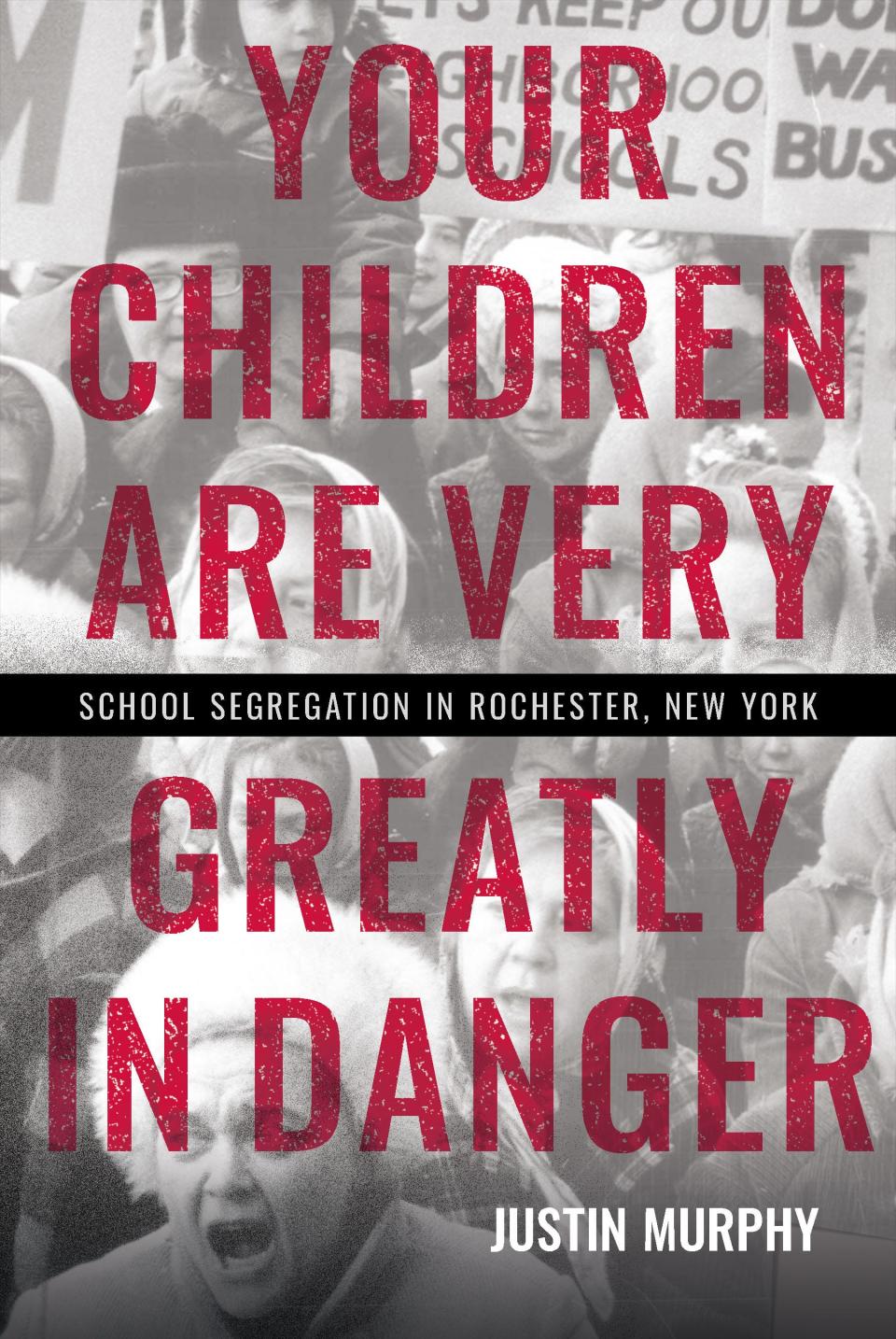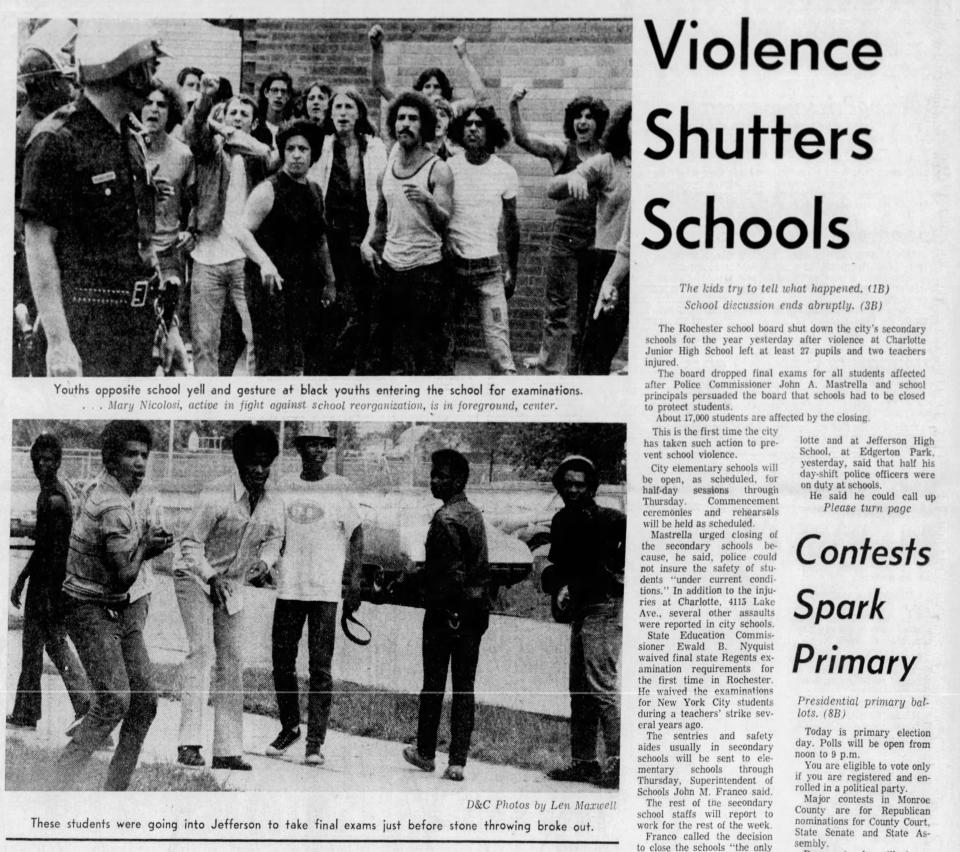Rochester newspapers during the civil rights era failed the city's Black community
I spent more than three years researching Rochester's history in the civil rights era in the course of writing my book, "Your Children Are Very Greatly in Danger," on the topic of school segregation. That time also served as an opportunity to examine how the daily Gannett newspapers covered important stories about race, in particular during the 1960s.
Both the morning Democrat and Chronicle and the afternoon Times-Union did good work in certain cases. Gannett won a special Pulitzer Prize citation in 1964 for a nationwide series called "The Road to Integration," spearheaded in Rochester.
When it came to day-to-day coverage and editorial writing, though, the approach in both newspapers clearly was rooted in the community's socially conservative nature. For that reason, the journalists failed in their duty to inform the public.
There are two different sorts of coverage at play: news, meaning the factual stories written by reporters; and editorial, where non-reporters opine on the news of the day. In this case, both the Gannett news and editorial pages were slow to appreciate that a crisis was building.
Read excerpt here: 50 years ago Rochester tried an experiment with desegregation. It lasted less than 2 months
'Incessant agitation'
In May 1962, for instance, the NAACP filed a federal lawsuit against the district alleging segregation after several months of failed negotiations.
"Probably no other city in the country has approached the challenge of assimilating its non-white population with more determination and sincerity than Rochester," the D&C editorial page complained the following day. "Could anything be less timely and more disturbing at this sensitive point in progress than a lawsuit which seems to impugn the integrity and good faith of the community?"
Several months later, it continued in another editorial: "The incessant agitation attending these charges ... does a disservice to education."

Second, as Black migration into Rochester continued and advocates kept up their "incessant agitation," the Gannett editorialists did to some extent accept segregation as a real problem that needed to be addressed – while at the same time decrying forceful advocacy as impolite and inopportune.
"Unfortunately, the case history of FIGHT and Friends of FIGHT is the same old story of fervor for needed reform being wrecked by irresponsibility," the D&C wrote in 1966. "Organizations can be militant — even combative and angry — but when they become abusive they frustrate all the good works of responsible people working toward the same end."
After the school board rejected a desegregation solution in 1970, triggering new protests, the Times-Union editorial page pleaded: "Above all, let us be done with boycotts and demonstrations for an unobtainable ideal, on either side of the dispute which has polarized this community. It is high time for cooling passions, lowering voices, and accepting compromise."
'Curiously detached...'
Both of those criticisms have more to do with the newspapers' editorial pages than with their news coverage. The Gannett reporters excelled at explaining the various RCSD proposals and documenting contentious public meetings. In general, when it came to explaining procedural changes or interpreting political action, the story was in the reporters' comfort zone.
Yet at the same time, these reporters seemingly were reluctant to take the story from the political to the personal — and, especially, to recognize the way that white anti-busing leaders were using violence as a tool to defeat integration.
They also proved to be sorely lacking in sourcing in the Black community and thereby missed, or misjudged, many significant stories. As an outside journalist wrote in Time Magazine in 1972, the coverage was "generous but curiously detached."
Many people I interviewed, as well as many official contemporary sources, stated that white people regularly hid in Riverside and Holy Sepulchre cemeteries on Lake Avenue and threw rocks and bricks at buses carrying Black students into the white neighborhood of Charlotte. There were many other well-documented and corroborated incidents of attacking buses as they arrived at schools. No reporter ever had any of those stories.
In the municipal archives I found an April 1971 police report describing how someone spray-painted a racial slur in three-foot letters on the front of Charlotte High School.
The school closed early that day due to violence. Yet the D&C story waited until the 12th paragraph to mention "an inflammatory hand-painted sign on the building's exterior." Instead, it quoted the school principal saying the initial problem had started with "an argument between a black boy and a white girl."

Reporters miss plenty of stories, of course. But I found case after case of this inadequate or imbalanced coverage on school segregation in particular — and this was the hottest topic in town for several years, with multiple reporters at two newspapers covering it more or less full-time.
It is hard to escape the conclusion that Gannett reporters, like their colleagues in the editorial department, lacked both the interest and the sources to fairly cover the Black community in Rochester, as well as the violence inflicted upon it by white people.
In fact, several former Gannett journalists conceded as much in a 2001 oral history of newspaper work in Rochester, "On The Record," by journalism professor Bonnie Brennen.
"We probably were no different than most other white institutions," one longtime journalist said. "We were in the majority. … (The Black community's) numbers were beginning to grow, but they were in their neighborhoods and everybody else was in theirs. They stayed there and we stayed here."
A new perspective
I shared these findings with Mike Kilian, the D&C's executive editor since 2019. He began with some empathy for his counterparts half a century ago.
"As editor at the D&C today, I think: 'What will people of the future recognize that we’re not seeing now?'" he said. "Journalism can be quite humbling because sometimes we don't know what we don't know, or we haven't put our resources or our focus where we needed to."
His main takeaway from the Gannett coverage during the school desegregation debate was its steadfast establishment bias.
"Rochester was the headquarters of the Gannett company then and some of the finest journalists in the company worked here," Kilian said. "The talent was there, but much of the effort was focused around talking to (authorities), and it goes without saying that in that era most of those people were white and male and older than age 40. … So the journalists missed some of the pain people felt about their children not receiving a quality education and even the outright hate some of the children were facing."
Since Kilian arrived in 2019, D&C editors have tracked the percentage of stories published each month that are likely to appeal in particular to Black and Latino readers.
The first month, he said, that figure was 3.3%. Now it is approaching 16%, a figure which better mirrors the Black and Latino population of Monroe County.
There are three main strategies to make our coverage better reflective of the community Kilian said. First, making a point of spending time in under-reported neighborhoods and cultivating more diverse sources. Second, being more purposeful in story development conversations. Third, hiring and retaining diverse journalists.
"What are the voices we haven’t been including?" he asked. "How do we get beyond news-of-record coverage and instead ask a 'how' or a 'why' or a 'who' question that sheds light on how things really work?
"Daily coverage is remarkably institutional, historically speaking … and only in recent years do I think the local news business is trying to solve for that," Kilian said.
Contact staff writer Justin Murphy at jmurphy7@gannett.com.
This article originally appeared on Rochester Democrat and Chronicle: D&C, Times-Union reporting failed to meet challenge of civil rights era

